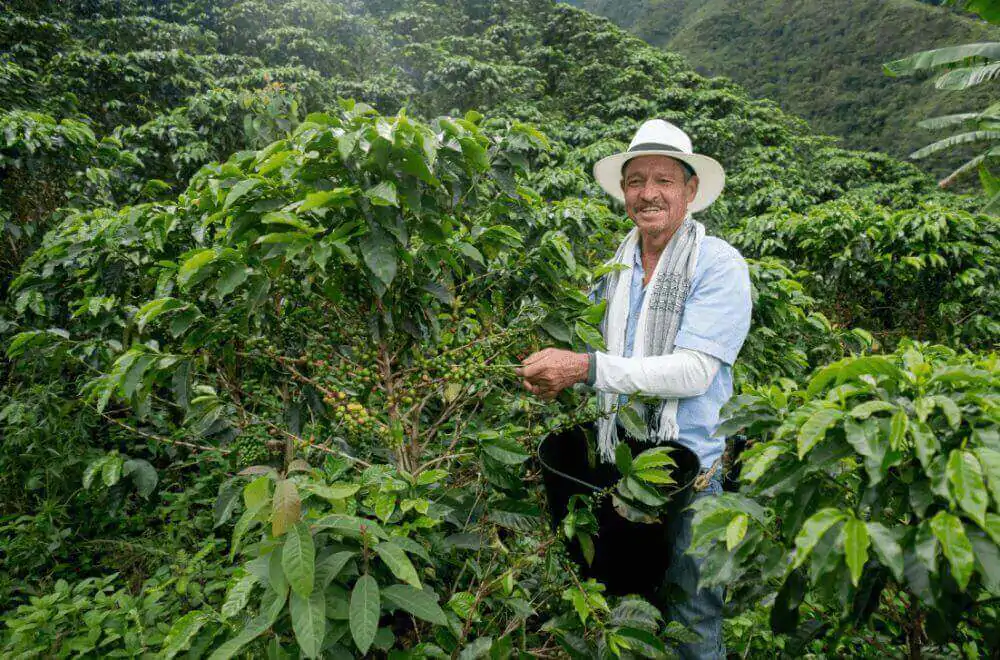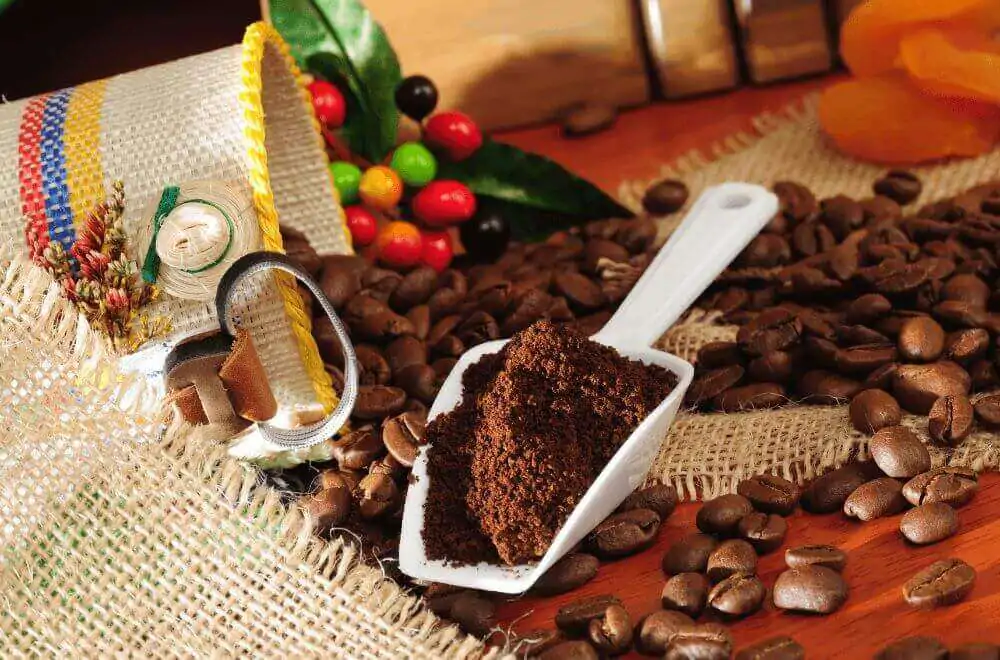Have you ever wondered, “What does Colombian coffee taste like?” This article can help you learn more about this bold coffee and if it’s right for your palette.

If you’re like me, then you probably grab the cheapest coffee on sale without paying attention to its roast, flavor, or origin. I didn’t bother to check on the origin of my coffee until recently when I started looking into the different roasting and harvesting processes and realized just how important it is.
Sadly, you might have missed out on the rich flavor of Colombian coffee. So, what does Colombian coffee taste like? While different factors alter the taste, in general, it’s a medium-bodied cup of Joe with notes of chocolate, caramel, nuts, and a hint of citrus.
What Is Colombian Coffee?
Before you understand the complex taste and profile behind Colombian coffee, let’s talk a little bit about its history. Colombian coffee is grown in Colombia in the Andes Mountains at high altitudes of around 800 to 2000 meters and is exported worldwide. At these altitudes, Colombia can only produce Arabica beans.
While many people think Colombian coffee is a type of espresso, this isn’t always the case. Colombian coffee simply means it was grown in Colombia, and it can be a variety of espresso or non-espresso roasts.
Arabica Beans Vs. Robusta Beans
Arabica beans are a higher quality bean than Robusta beans and are known for their milder, more complex flavors. Arabica beans often have sweet berry-like tones and can be enjoyed both as black coffee or with milk added.
Due to Robusta growing at less than 800 meters, it’s virtually impossible to grow in Colombia. This means that Colombian coffee is almost always made with Arabica beans, and the quality of this coffee is naturally higher than many other blends. You might be interested in our round-up of the best Colombian coffee brands.
Factors That Affect The Flavor Of Colombian Coffee
Colombian coffee is known for its bold flavor and sharp acidity but also for its sweetness. You may detect flavors of chocolate, nuts, caramel, and even citrus fruit. It’s an earthy flavor that is medium-bodied – almost like a bittersweet beverage.

Colombian coffee is also known for its smooth, balanced flavor. It has a pleasant aroma and pairs nicely with milk or cream. The taste of Colombian coffee can vary greatly depending on the region in which it was grown.
Generally, you will find sweet fruit notes, chocolate undertones, and mild acidity. Below are some factors to consider that might change the general flavor profile of your Colombian coffee.
Caffeine Content
Colombian coffee has less caffeine than other types of coffee. The lowered caffeine means it isn’t as bitter but still has bold and fruity notes. On the other hand, a Robusta blend will have more caffeine and a harsher taste.
This is the reason most people tend to use Robusta beans for espresso, while Colombian coffee is great for drips, cold brew, and other types of coffee.
Roast Level
The roast level of the beans can also change the flavor profile. A light-roasted Colombian blend will have a sweet, fruity taste with more acidity and tartness than a dark roast. Dark roasted Colombian blends will be smokier and richer with less acidity and more bitterness.
That’s because, during the roasting process, you’ll lose some of the bright and fruity notes, but you’ll also get a more intense and rich flavor. Dark roasts are ideal for espresso and cold brews, while lighter roasts are better for pour-over or drip brewing.
Harvest Season
The harvest season also affects the flavor of Colombian coffee. Generally, a crop harvested in early summer will be more acidic with tart and well-developed notes. During the winter, you might notice a smoother and sweeter flavor due to underdeveloped notes.
Most high-altitude coffees in South America, such as those in Colombia, Brazil, and Costa Rica, have sweeter notes than those grown in lower altitudes.
Processing Methods
Heat controls everything with Arabica coffee. Between 338°F (170°C) and 392°F (200°C), a process known as caramelization occurs and leads to the development of caramelized sugars. This is why Colombian coffee can have sweet qualities – because more sugar has caramelized in the beans leading to a better flavor.
Farm Location
The higher and cooler the altitude, the sweeter the flavor of Colombian coffee. High altitudes mean a slower growth process for the beans, which leads to more complex and intense flavors. Lower altitudes produce duller and more acidic notes in comparison.
For instance, there are certain plantations that grow coffee beans nourished by volcanic soil. Volcanic soil plays a major role in the flavor of Colombian coffee because the minerals help to bring out sweetness, acidity, and complexity. Check out our Colombian vs. Ethiopian coffee guide.
Why High-Quality Colombian Coffee Matters

It’s important to note that master roasters will understand how to perfectly combine all of these factors to bring out the best flavor in a Colombian coffee blend. This is why it’s important to buy quality beans if you want the best-tasting cup of Colombian coffee.
For instance, an experienced roaster will change the temperature and time of the roast to bring out the bold, fruity notes of Colombian beans. They will also use techniques such as blending multiple varieties of Colombian beans together to create a unique blend with nuanced flavors.
Ultimately, quality matters when getting the best-tasting Colombian coffee. With high-quality beans and expert roasting skills, your Colombian coffee will have subtle citrusy notes, sweetness, and complexity.
In addition, when you buy quality beans from Colombia, you’re also supporting farmers committed to sustainable practices. This ensures that they will be able to continue producing high-quality beans year after year. Plus, it’s more enjoyable to drink a good cup of coffee made by the masters!
